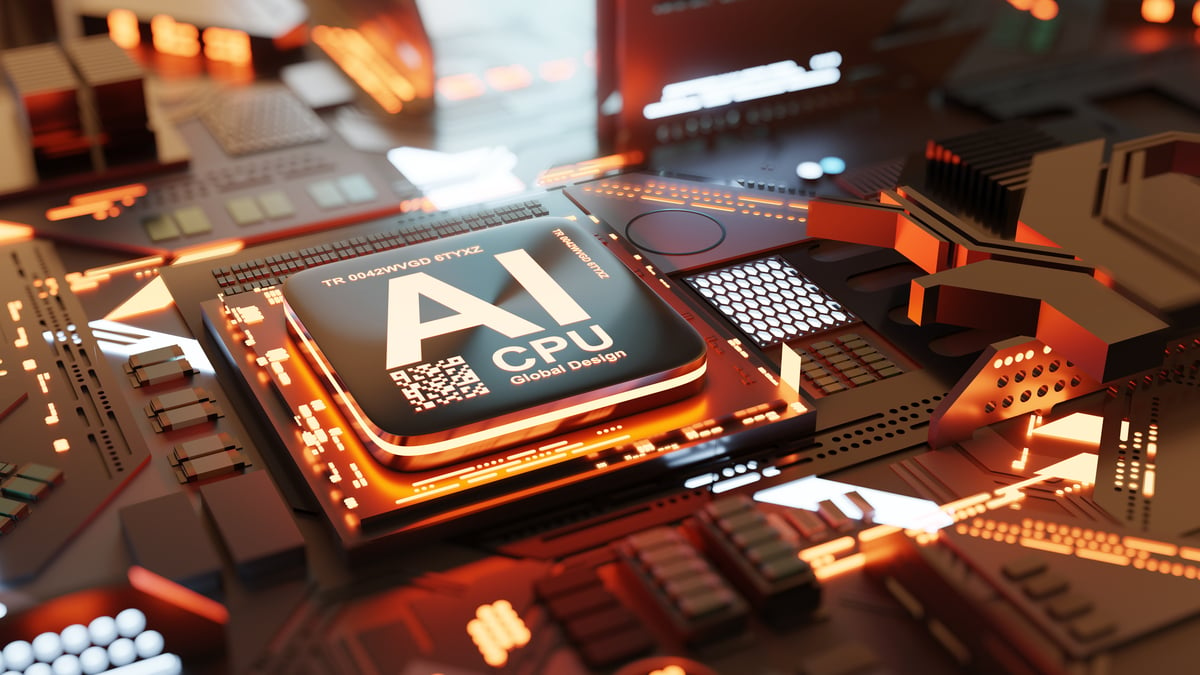The artificial intelligence (AI) revolution is underway. The good news for investors is that it's still in its relatively early innings, so there is plenty of strong growth yet to come.
The global AI market will soar from $189 billion in 2023 to $4.8 trillion by 2033 -- a 25-fold increase in a decade -- according to a spring 2025 estimate by the United Nations Conference on Trade and Development.

Image source: Getty Images.
Why buy an AI ETF?
Buying individual stocks related to rapidly evolving technology can be risky. This year's leader could be next year's loser. So, some investors may want to limit their risk by purchasing an AI-related exchange-traded fund (ETF). ETFs trade like individual stocks, rather than like mutual funds.
An AI ETF doesn't have to replace individual AI stock or stocks. It can make a good complementary holding.
What's the best AI-related ETF?
There are several attractive ETFs focused on artificial intelligence. One of the best, in my view, is an ETF without "AI" in its name: the VanEck Semiconductor ETF (SMH 0.34%). Semiconductors, also known as chips, are key components of AI infrastructure, including those used in servers within data centers. AI chips and related tech are also used as "brains" inside items ranging from smartphones to cars to robots.
I recommended the VanEck Semiconductor ETF in January of this year. Shares have returned 40.1% since the start of the year through Monday, Nov. 24. That's about 2.6 times the S&P 500 index's return of 15.3% over this period.
I still like this ETF, primarily because the AI infrastructure buildout is still booming, as evidenced by the big tech companies continuing to increase their planned capital spending on AI. Moreover, driverless vehicles are getting closer to becoming legal across the United States, and useful humanoid robots are poised to become available sooner than many people might think.
VanEck Semiconductor ETF: Performance
| ETF/Index | YTD 2025 Return | 1-Year Return | 3-Year Return | 5-Year Return | 10-Year Return |
|---|---|---|---|---|---|
| VanEck Semiconductor ETF | 40.1% | 39.3% | 210% | 245% | 1,310% |
| S&P 500 index | 15.3% | 13.8% | 73.9% | 98.6% | 282% |
Data source: YCharts. YTD = year to date. Data as of Nov. 24, 2025.

NASDAQ: SMH
Key Data Points
VanEck Semiconductor ETF: Overview
The VanEck Semiconductor ETF began trading in late 2011, so it has a reasonably long track record, unlike some of the other ETFs that have emerged more recently to capitalize on the AI boom.
It's an index fund designed to track the performance of the MVIS US Listed Semiconductor 25 Index, which comprises a portfolio of global companies involved in the entire chip value chain. As its name suggests, the fund has 25 stock holdings, all of which are listed on a major U.S. stock exchange.
The ETF employs a modified market capitalization weighting, capping the maximum weighting for any holding at 20%. Its total expense ratio is 0.35%, which is reasonable for a fund focused on a specific theme.
VanEck Semiconductor ETF: Top 10 stock holdings
|
Holding No. |
Company |
Market Cap |
Wall Street's Projected Annualized EPS Growth Over Next 5 Years |
Weight (% of Portfolio) |
3-Year Return |
|---|---|---|---|---|---|
|
1 |
Nvidia (NVDA +0.70%) | $4.4 trillion | 46.6% | 18.50% | 1,010% |
|
2 | Taiwan Semiconductor Manufacturing (TSM 1.47%) |
$1.2 trillion | 30.3% | 9.69% | 265% |
|
3 | Broadcom (AVGO 5.65%) | $1.8 trillion | 36.5% | 8.44% | 645% |
|
4 | Micron Technology | $251 billion | 40.7% | 6.11% | 286% |
|
5 | Advanced Micro Devices | $351 billion | 44.3% | 5.86% | 181% |
|
6 | Applied Materials | $184 billion | 8% | 5.66% | 120% |
|
7 | ASML Holding |
$382 billion | 22.6% | 5.59% | 67.8% |
| 8 | Lam Research | $190 billion | 14.8% | 5.48% | 237% |
| 9 | Intel | $170 billion | N/A. 79.1% next year. | 5.42% | 24.9% |
|
10 | KLA Corp | $150 billion | 11% | 4.81% | 203% |
|
Total top 10 |
N/A | N/A | N/A | 75.56% | N/A |
|
Overall ETF |
N/A |
Total net assets of $34.8 billion | N/A |
100% | 210% |
|
N/A |
S&P 500 |
N/A | N/A |
N/A | 73.9% |
Data sources: VanEck Semiconductor ETF, finviz.com, and YCharts. EPS = earnings per share. Portfolio weights as of Nov. 21, 2025. All other data as of Nov. 24, 2025.
I chose to show 3-year returns for the stock holdings for a reason. Three years ago this month, the AI revolution received a significant boost with the launch of OpenAI's generative AI-powered application, ChatGPT, a chatbot whose capabilities amazed tech leaders and consumers.
Therefore, the 3-year returns provide investors with a gauge of how well a particular chip company is performing during what I refer to as the "Generative AI Era."
The stocks above fall into three categories:
- Chip companies: Nvidia, Broadcom, Micron, AMD, and Intel.
- Chip foundry: Taiwan Semiconductor Manufacturing Co. (TSMC).
- Chip equipment makers: Applied Materials, ASML, Lam Research, and KLA.
Here's a brief description of my favorites in the group:
Nvidia
Nvidia's graphics processing units (GPUs) dominate the market for chips to enable AI capabilities. The company also produces software and other hardware, offering a full-stack AI solution. It's also a major player in the high-performance networking space. Demand for Nvidia tech to enable AI in data centers has been voracious.
Broadcom
Broadcom makes semiconductors and infrastructure software. Its growth is being driven by strong demand for its products in AI data centers, including custom AI chips (application-specific integrated circuits, or ASICs) and Ethernet networking products, as well as its acquisition of software maker VMware in late 2023.
TSMC
TSMC is the world's largest semiconductor foundry. It produces chips for companies that contract out their chip manufacturing. Its customers include many of the big-name tech and semiconductor companies, such as Apple, Nvidia, Qualcomm, AMD, and Broadcom.
A less risky way to invest in AI
To conclude, buying an AI ETF can be a less risky way to invest in AI compared to purchasing individual AI stocks. The VanEck Semiconductor ETF is a good choice among ETFs for profiting from the AI boom.




